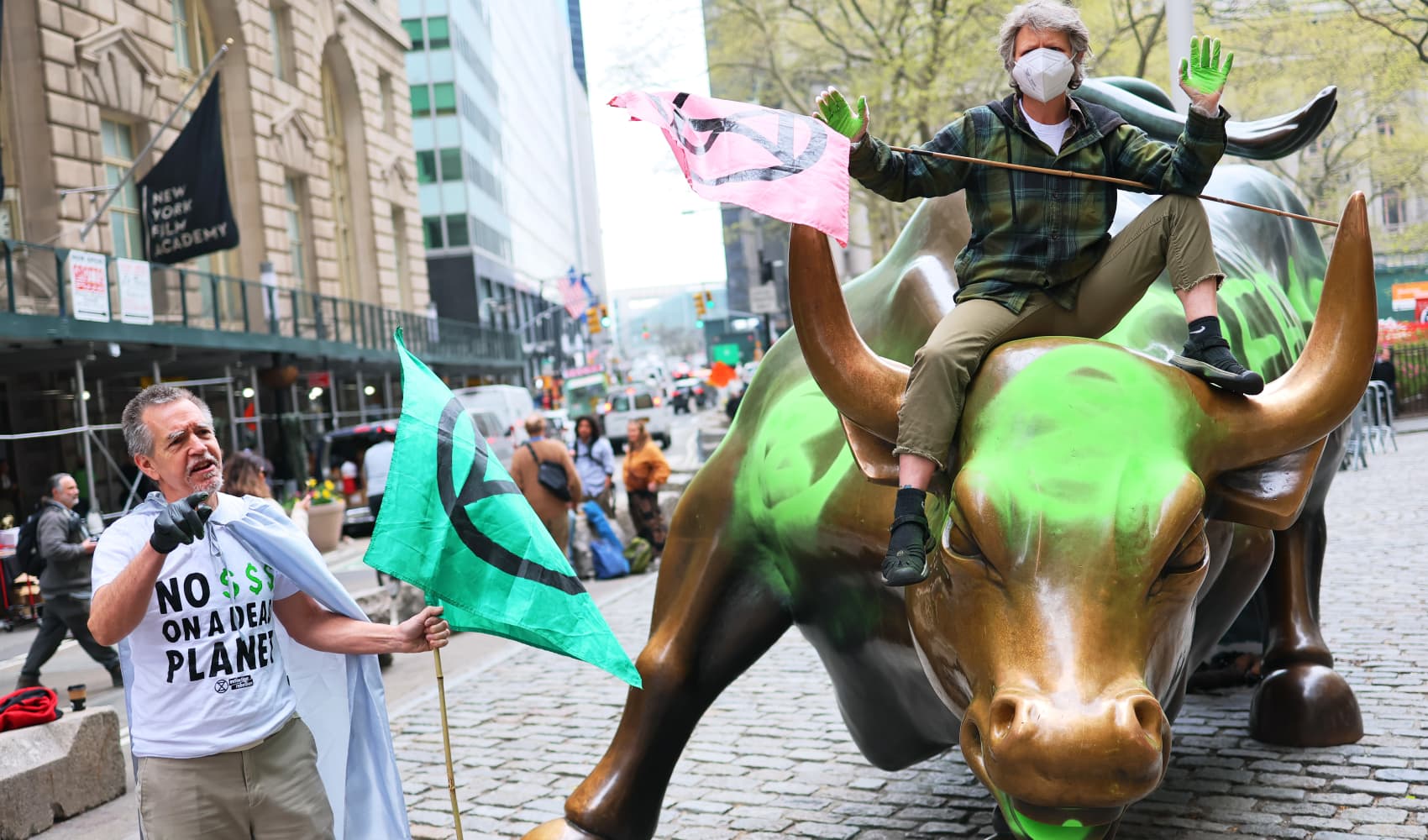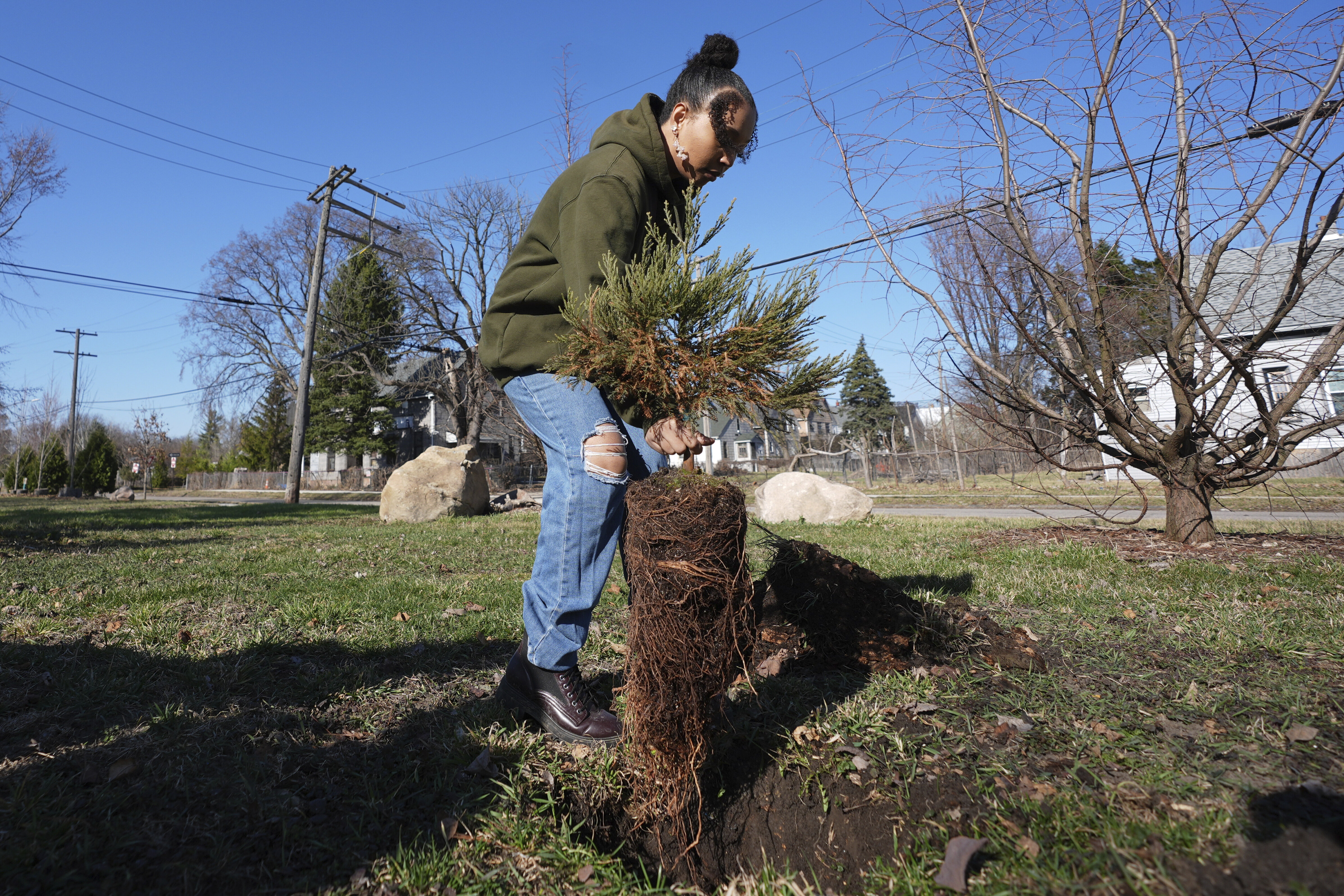Wall Street Bull Vandalized: Climate Protest on Earth Day!
Wall Street Bull Attacked: Climate Activists Paint Statue Green in Earth Day Protest
Introduction: A Bold Statement on Earth Day
Imagine the iconic Charging Bull of Wall Street, a symbol of financial power and American capitalism, suddenly splattered with neon green paint. It's not just a visual shock; it's a statement. And that's exactly what happened on Tuesday, as environmental activists took a decidedly bold approach to Earth Day, targeting one of the most recognizable statues in the world. This act of vandalism has sparked debate, raising questions about the role of financial institutions in climate change and the effectiveness of disruptive protest. But what exactly led to this incident, and what message were these activists trying to send? Let’s dive in.
Extinction Rebellion Takes Responsibility
The environmental activist group, Extinction Rebellion, quickly claimed responsibility for the act. They took to social media platform X to announce their actions, painting the words "Greed = Death" on the bull’s body. This wasn’t just random vandalism; it was a calculated move to highlight what they see as the destructive nature of unchecked financial ambition. But who exactly is Extinction Rebellion, and what are their core beliefs?
Who is Extinction Rebellion?
Extinction Rebellion is a global environmental movement that uses nonviolent civil disobedience to compel governments and corporations to take action on climate change. They believe that radical change is necessary to avert environmental collapse, and they're willing to make headlines to get their message across. Their tactics often involve disruptive protests, designed to draw attention to the urgency of the climate crisis.
The Message: Greed Equals Death
The activists' choice of words – "Greed = Death" – is a potent indictment of the financial system. They argue that the relentless pursuit of profit, often at the expense of the environment, is ultimately unsustainable and self-destructive. Is this a fair assessment? Are financial institutions truly prioritizing profits over the planet?
Is Wall Street Contributing to Climate Change?
It's a complex question. On one hand, many financial institutions invest in fossil fuels and other industries that contribute to greenhouse gas emissions. On the other hand, there's a growing movement towards sustainable investing and environmentally responsible business practices. But are these efforts enough? Extinction Rebellion clearly believes they aren't.
The Scene: Bowling Green Park Disrupted
Bowling Green Park, usually a bustling hub of tourists and locals, became a stage for protest and confrontation. One activist even climbed onto the Charging Bull, further amplifying the spectacle. The arrival of New York City police officers added another layer of tension to the scene.
Law Enforcement Intervention
A New York City police officer was seen asking the activist atop the bull to dismount. While the situation remained relatively peaceful, it underscored the inherent conflict between freedom of expression and the potential for property damage. Where is the line drawn between protected speech and vandalism?
The Aftermath: Cleaning Up the Mess
While the protest was designed to make a splash, it wasn’t intended to cause lasting damage. The activists themselves cleaned off the green paint from the Charging Bull later on Tuesday, demonstrating that their goal was not to destroy property but to deliver a message. Is this a sign of responsible activism, or simply an attempt to mitigate the legal consequences of their actions?
The Debate: Effective Activism or Vandalism?
The incident has ignited a fierce debate. Some applaud Extinction Rebellion for bringing attention to a critical issue, arguing that drastic times call for drastic measures. Others condemn their actions as vandalism and believe that there are more effective ways to advocate for environmental change. What do *you* think?
Earth Day: A Day for Reflection and Action
The vandalism occurred on Earth Day, a day dedicated to raising awareness about environmental protection. The timing was deliberate, highlighting the activists' belief that Wall Street needs to be held accountable for its role in the climate crisis. Earth Day serves as a powerful reminder of the importance of sustainability and responsible stewardship of our planet.
Earth Day's History and Significance
First observed in 1970, Earth Day has grown into a global movement, mobilizing communities and individuals to take action on environmental issues. It's a day for education, advocacy, and collective efforts to protect our planet for future generations. Has Earth Day lost its original focus, or does it still serve as a crucial platform for environmental awareness?
The Charging Bull: An Enduring Symbol
The Charging Bull statue, created by artist Arturo Di Modica, has become an iconic symbol of Wall Street and American financial power. It represents optimism, strength, and the potential for growth. But for some, it also embodies the excesses of capitalism and the potential for environmental destruction.
The Statue's Origins and Meaning
Di Modica originally installed the statue without permission in 1989, as a symbol of hope and resilience following the stock market crash of 1987. It quickly gained popularity and became a permanent fixture of the Financial District. Is the statue’s meaning evolving in light of growing concerns about climate change and corporate responsibility?
The Broader Context: Climate Change and Finance
The incident highlights the growing tension between the financial industry and environmental advocates. Activists are increasingly targeting corporations and financial institutions, demanding that they take responsibility for their impact on the planet. Are these demands reasonable, or are they unfairly targeting the wrong actors?
Sustainable Investing: A Growing Trend
While some financial institutions continue to invest in environmentally harmful industries, there's also a growing trend towards sustainable investing. This involves allocating capital to companies and projects that are committed to environmental, social, and governance (ESG) principles. Is sustainable investing a genuine solution, or just a marketing ploy?
The Future: Will Activism Change Wall Street?
It remains to be seen whether this act of vandalism will have a lasting impact on Wall Street. However, it undoubtedly raises awareness and sparks conversation about the role of finance in climate change. Will this incident lead to meaningful change, or will it simply be a fleeting moment of protest?
The Power of Public Opinion
Ultimately, the power to change Wall Street lies in the hands of consumers, investors, and policymakers. By demanding greater transparency and accountability from financial institutions, and by supporting sustainable alternatives, we can collectively create a more environmentally responsible financial system. Can public pressure truly influence corporate behavior?
Conclusion: A Message Received?
The vandalism of the Charging Bull statue by Extinction Rebellion was a dramatic and controversial act of protest. Whether you agree with their tactics or not, it's undeniable that they succeeded in capturing the attention of the world. The incident serves as a stark reminder of the urgency of the climate crisis and the growing demand for financial institutions to take responsibility for their environmental impact. The real question is: will Wall Street listen?
Frequently Asked Questions
Here are some frequently asked questions regarding the Charging Bull vandalism incident:
- Why did Extinction Rebellion target the Charging Bull statue?
Extinction Rebellion targeted the Charging Bull as a symbol of Wall Street and the financial industry, which they believe contributes to climate change through investments in unsustainable practices.
- What does "Greed = Death" mean in the context of the protest?
The phrase "Greed = Death" represents the activists' belief that the relentless pursuit of profit by financial institutions, often at the expense of the environment, is ultimately destructive and leads to negative consequences for the planet and its inhabitants.
- Was the vandalism of the Charging Bull statue legal?
No, the act of spraying the Charging Bull with paint constitutes vandalism and is illegal. While the activists have the right to protest, they do not have the right to damage property.
- What are the potential consequences for the activists involved?
The activists involved could face charges for vandalism, property damage, and potentially other offenses depending on local laws and the discretion of law enforcement.
- How does this incident relate to the broader issue of climate change and finance?
This incident highlights the growing tension between the financial industry and environmental advocates. Activists are increasingly targeting corporations and financial institutions, demanding they take responsibility for their impact on the planet and invest in sustainable solutions.

